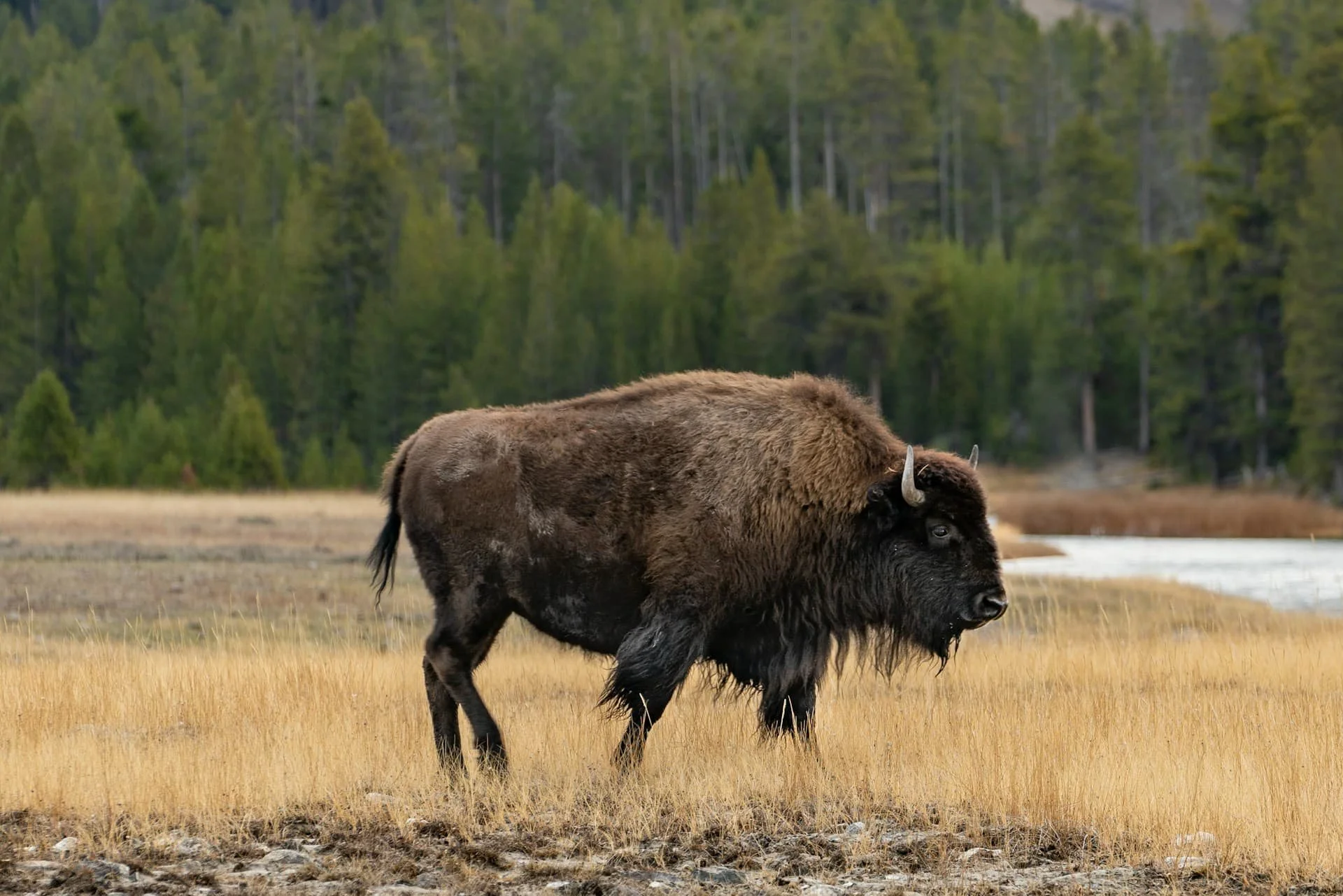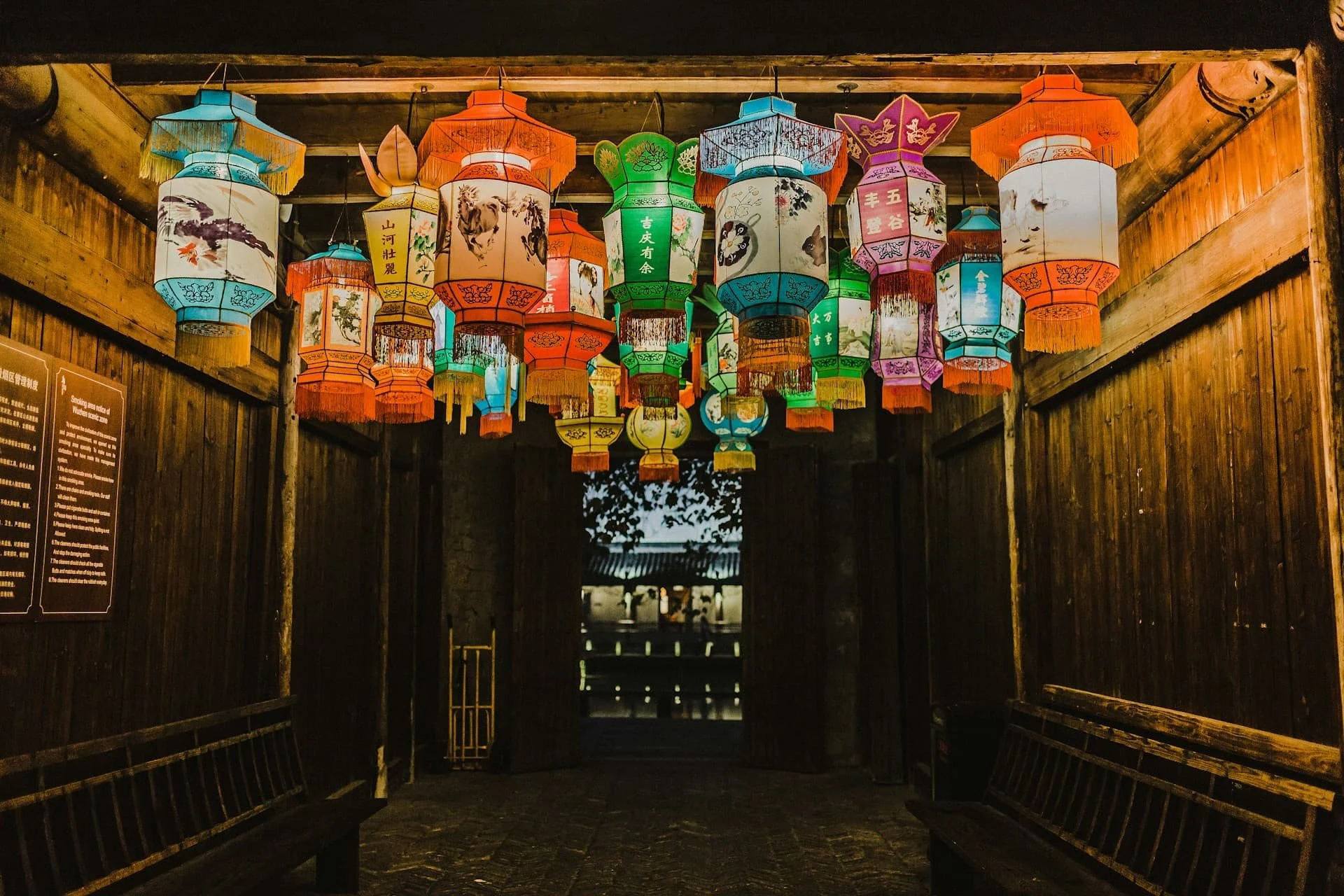Where to See Bison, Elk and Bears Safely in Yellowstone National Park
A quick guide to wildlife spotting in Yellowstone
MeganBrady / Shutterstock
Yellowstone is one of the few places on Earth where your “commute” between geysers might be halted by a bison herd, a bugling bull elk, or a grizzly padding across a meadow. Here’s exactly where—and how—to watch the action without becoming part of it.
Start Smart: distance, pullouts, bear spray
Before chasing sightings, lock in the basics. Yellowstone’s safety rules are gloriously simple and non-negotiable: stay at least 100 yards (91 m) from bears and wolves, and at least 25 yards (23 m) from bison, elk, and everything else with hooves or horns. If an animal moves toward you, you’re too close—back away. It’s illegal to willfully approach wildlife within any distance that disturbs them, and rangers do enforce it.
Use paved pullouts, not the road shoulder, when you stop to watch wildlife. Park with all four wheels to the right of the white line; never stop in the lane just because you spotted a bear jam forming. The park repeats this advice often for a reason.
Carry bear spray where you can reach it fast and know how to use it. The park provides clear instructions—create a wall of spray 30–60 feet in front of you if a bear charges, then leave the area without running. It’s a deterrent, not a cologne; don’t apply it to gear or yourself.
Bison: the park’s rolling traffic control
Yellowstone’s bison number in the thousands, split between a northern herd and a central herd. You can find them year-round in the Hayden and Lamar valleys, and seasonally across the park’s grasslands. In winter, they gravitate to hydrothermal areas and the Madison River corridor; in early summer, watch for calves—bright ginger “red dogs”—knocking about close to the herds.
For classic, big-sky scenes, aim for Lamar Valley at dawn or late afternoon. Work the pullouts from Tower–Roosevelt toward Slough Creek and the Lamar Buffalo Ranch; give yourself time to simply sit and scan. Hayden Valley is the other heavyweight—broad, river-cut, and nearly designed for wildlife viewing. If you’re visiting in late July and August, you’ll often hear and see the rut in these valleys: bulls grunting, wallowing, and corralling cows in noisy “bison parades.” Park publications call out these exact places and timing.
When snow flies, shift your search to the Madison River between West Yellowstone and Madison Junction, and to lower-elevation areas like the Blacktail Deer Plateau and the Gardiner Basin near the North Entrance. Thermal ground keeps forage open and roads passable—good for bison and for your sightings.
Elk: the soundtrack of September
Elk are Yellowstone’s most abundant large mammal, and they don’t hide their calendar. In September and early October the rut takes over the northern range: Mammoth Hot Springs becomes an amphitheater of bugles and posturing, with herds moving across the historic, irrigated lawns and the Gardner River corridor. Elk also stage along the Madison River during rut. Through summer, look to Cascade Meadows, the Madison Canyon, and Lamar; in winter, many migrate north toward Gardiner outside the park.
Watching elk in Mammoth is unforgettable and requires extra respect. Bulls are keyed-up and unpredictable during mating season, and rangers issue seasonal warnings every year. Give them more than the minimum space, keep doors closed, and don’t get penned in by a herd when you park. The park’s own notices spell this out in plain language for a reason.
If you want the drama with fewer crowds, try dawn at Swan Lake Flat south of Bunsen Peak or the pullouts between Madison Junction and the West Entrance, then circle back to Mammoth once the sun is up. These spots are specifically noted by the park and its official partners as reliable arenas for elk activity.
One more seasonal note: in late spring, cow elk are fiercely protective of calves—even if you’re outside the 25-yard bubble. Around Mammoth they sometimes stash calves near buildings and cars, so take blind corners slowly and keep your head on a swivel. National Park Service
Bears: dawn, dusk, and the northern range
Nagel Photography / Shutterstock
Both grizzly and black bears roam the park, and your best bet to see them from a safe, legal distance is to think like a bear biologist: go early or go late, and focus on habitat funnels. The National Park Service points to Hayden Valley and Lamar Valley, the north slopes of Mount Washburn, and the corridor from Fishing Bridge toward the East Entrance as reliable places to scan. These routes combine open country for foraging with hillsides and drainages that bears use to travel.
If you’re based in the north, the Blacktail Plateau Drive is a lovely one-way dirt road that threads meadows and thin forests between Mammoth and Tower; it’s an official park road that often produces bear sightings at first and last light. Keep your wheels on the road, use the pullouts, and treat it as a slow-motion safari. In the park’s heart, Hayden Valley rewards patience. Pick a high pullout, set up a scope or long lens, and glass the benches along the Yellowstone River as shadows lengthen. Do the same in Lamar, particularly around Slough Creek and the wide meadows east of Tower–Roosevelt. The park and its partners consistently highlight these valleys as prime bear country at the bookends of the day.
If you’re tempted by storied backcountry like Pelican Valley, know the rules before you lace up. Bear Management Areas impose seasonal closures and strict day-use windows to protect both bears and people. Pelican Valley, for instance, is closed April 1–July 3 and then open to day use only between 9 a.m. and 7 p.m. through November 10. You can’t “cheat” dawn there; plan roadside, long-lens viewing instead.
And when you are watching a bear from the road, the safest seat in the house is your car. If a bear approaches or touches your vehicle, honk and drive away rather than lingering for a closer photo. That’s straight from the park’s photography and wildlife-watching guidance.
When to Go and What to Expect
Crepuscular hours—civil dawn to sunrise and again near sunset—are best across species. In hot midsummer, mid-day is naptime for most wildlife; in spring and fall, activity pushes longer into the day. If you’re visiting outside peak summer, check what’s open and when. Facilities and some roads begin to close in October and don’t fully reopen until late spring; planning around those dates makes the difference between a brilliant wildlife morning and a long detour.
Seasonally, bison rut in late July and August in Hayden and Lamar; elk rut peaks in September into mid-October on the northern range; bears are most visible on road corridors in spring as they emerge hungry and again in late summer and fall as they chase cutthroat trout, elk calves, and high-country berries.
How to See More Wildlife in Yellowstone
Wildlife watching rewards patience over ping-ponging between tips you heard at a gas station. Pick a valley, pick a vantage, and give it time. Bring binoculars or a spotting scope, watch for other spotters set up with scopes, and listen—the sound of an elk bugle or the deep rumble of a bison herd will lead your eyes. The park’s own advice boils down to this: use the pullouts, stay with your vehicle around bears, never crowd animals for a photo, and let the animals be wild.
If you’re heading onto trails, go in a group of three or more, make noise in thick cover, and keep bear spray ready to deploy. Studies and park guidance show spray is highly effective at stopping aggressive bears when used correctly. Practice with an inert can before you need it, then keep the real thing accessible.
Enjoy the show, respect the distances, and you’ll leave with stories that don’t involve rangers, citations, or holes in your rental.















